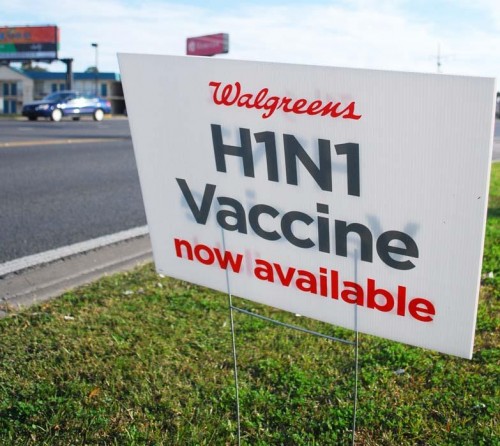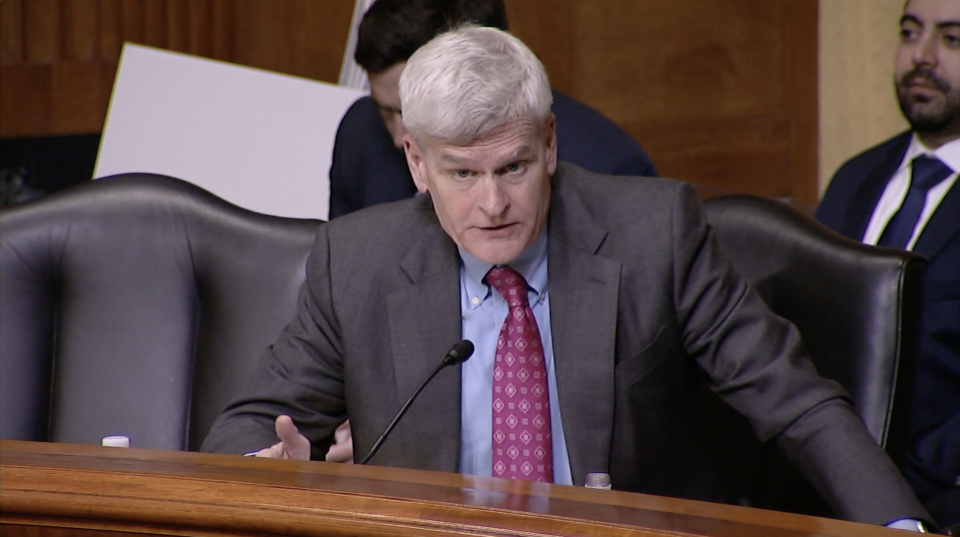Beck, Limbaugh went too far with comment
December 3, 2009Hilda Arcement Fournier
December 7, 2009The statewide Fight The Flu campaign is running full steam ahead as the battle to prevent an H1N1 epidemic in Louisiana heats up.
The campaign, which started this past April, will continue through April 2010.
Nearly $20 million in funds will be aimed at H1N1 prevention, along with a slew of manpower that includes public health officials, school nurses and volunteers.
Dr. Frank Welch, the Louisiana state medical director for pandemic preparedness, said that the $20 million would also include disease tracking, education and media efforts.
A $19.5 million grant from the Centers for Disease Control will be allocated for H1N1 preparedness and distribution. The American Recovery and Reinvestment Act will invest $390,792 for vaccines, while $138,957 will cover the cost of seasonal flu plans from Louisiana’s state immunization program.
The Louisiana Department of Health and Hospitals (DHH) has also created a Web site, fighttheflula.com, aimed at helping users find out more about seasonal flu and H1N1.
The Web site offers an H1N1 flu shot locator and gobs of information on how to stay healthy this flu season. However, some vaccine providers are only catering to patients and not the public.
Local schools have also considered the possibility of a massive H1N1 outbreak, urging students to get vaccinated and providing parents with information on how to keep their children flu free.
Local schools strike back
Attention now is falling on public and private school systems and their ability to prevent disease.
Spokesman for DHH, Sean Smith, said, “…schools are an easy place for the virus to spread. [Therefore] schools present an opportunity to hold mass vaccination clinics for our young people.”
And clinics are free. Smith also said “…if schools do incur expenses, they are to support vaccine implementation such as staff overtime, supplies and the printing of documents to ensure that parents and students know about the clinic. If expenses are incurred, schools are receiving that support funding through the Department of Education.”
Welch pointed out that children from 6 months to 21 are part of the target population. So schools are quickly becoming a prime location to stop the spread of flu, and especially H1N1.
Schools in Terrebonne, Lafourche and St. Mary parishes will continue to host H1N1 vaccination clinics through December.
According to Terrebonne assistant superintendent Carol Davis, local schools have been successful in their ploy to prevent a major flu outbreak. “We are definitely taking a lot of precautions and looking at our [health] practices,” she said.
Terrebonne parish schools will host vaccination clinics – a collaborative effort between the Louisiana Department of Health and Hospitals and the Louisiana Department of Education – starting around Dec. 14.
Clinics are expected to take up to two months to complete in Terrebonne Parish and will be voluntary.
The St. Mary Parish school board will be coordinating vaccination procedures using school nurses, licensed practical nurses, health occupation teachers and community volunteers.
According to a press release issued earlier this month, St. Mary Parish school officials “…have [also] been in contact with local law enforcement to secure officers for security and traffic control.”
Unlike other programs throughout the state that offer vaccinations at only one site, Terrebonne plans to personalize vaccinations by holding clinics at individual schools.
Davis expects 30 to 40 percent participation when clinics move forward in December. Remaining students will likely receive vaccinations through private physicians.
“We’re just waiting on the vaccine, which comes through the Department of Health and Hospitals,” she noted.
While that wait continues, Terrebonne parish schools will be focusing on disease prevention by using hand sanitizer in schools and isolating potential flu cases at home. “If your kids have a fever, then they need to stay home,” said Davis. “We’ve been giving out a lot of guidance in that area.”
Custodians also have been given extra duties, including wiping down classrooms each day and checking bathrooms every hour.
A letter released by DHH in October explained that the single best way to prevent the spread of H1N1 is to get vaccinated. It also urged parents to discuss frequent hand washing and sanitary habits with their children.
‘LINKS’ keeping it all together
As boundaries between health and education merge, technology has risen as a know-it-all bookkeeper.
LINKS – the Louisiana state electronic Immunization Registry – is making shot cards an item of the past. While vaccination clinics press forward, LINKS is ensuring that children’s and young adults shot records are up to date.
Immunization data is entered into the electronic database as vaccinations take place, said Smith. “Vaccinations are not something a parent or child seeks multiples of.”
Most physicians and medical offices use LINKS, but some do not.
“…We not only ask parents about previous vaccinations, but encourage them to also bring in their child’s shot card. Any physician or office that sees the child can then enter the entire vaccination history for the child, and then get a forecast of what the child currently needs,” assured Smith.
As a last resort, those administering the vaccine can call the child’s primary health-care provider to get a medical history.
Technology making it easier
America is undoubtedly living in an information-technology era, rampant with social networking sites, widgets and devices most can’t even spell.
However, DHH is using technology to its advantage. Maintaining that in order to reach the public with health information and other important communications, DHH will strive to use the most appropriate methods available.
The Fight The Flu campaign has utilized resources like Facebook and Twitter in hopes it can better reach its target audience, who are mostly tech-savvy teenagers and young adults.
These media outlets have not only allowed users to learn more about seasonal flu and H1N1 in Louisiana, but have also produced added benefits.
“We have, for example, been asked a question regarding vaccine availability by a member of a target group on Twitter, and we were able to respond to let the resident know where they could call to inquire about receiving the vaccine,” said Smith.
And while there is no monetary investment in these outlets, they appear to be producing results.
Smith noted, “Facebook and Twitter have provided a great outlet for [the Fight The Flu campaign] during the 2009 H1N1 influenza pandemic, and we will continue to use them to reach audiences for this and other programs and services.”
As H1N1 threatens to become a statewide pandemic, South Louisiana schools, retailers and health care facilities fight back. Walgreens in Houma is one of the many places residents can get vaccinated for H1N1. * Photo by MICHAEL DAVIS











